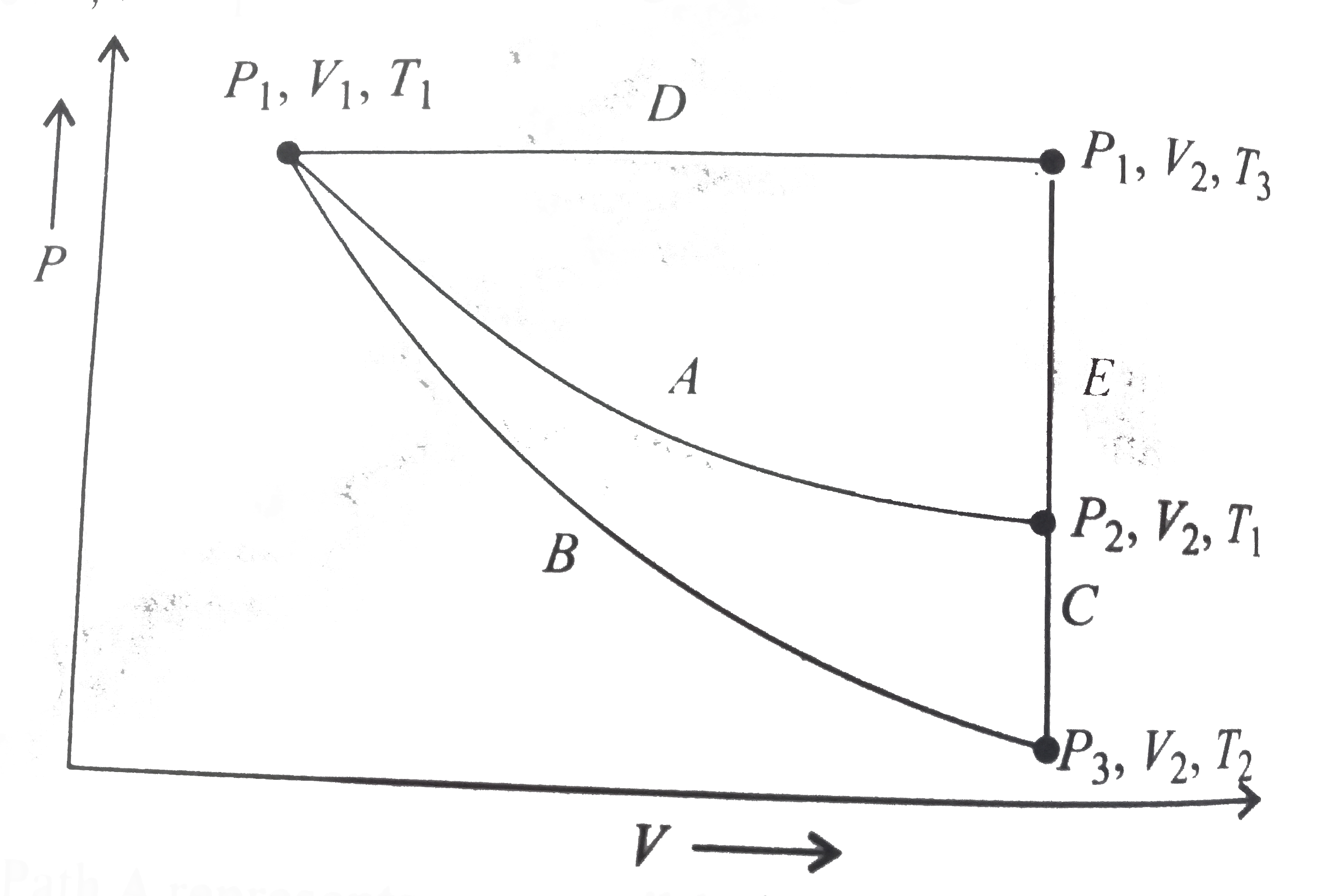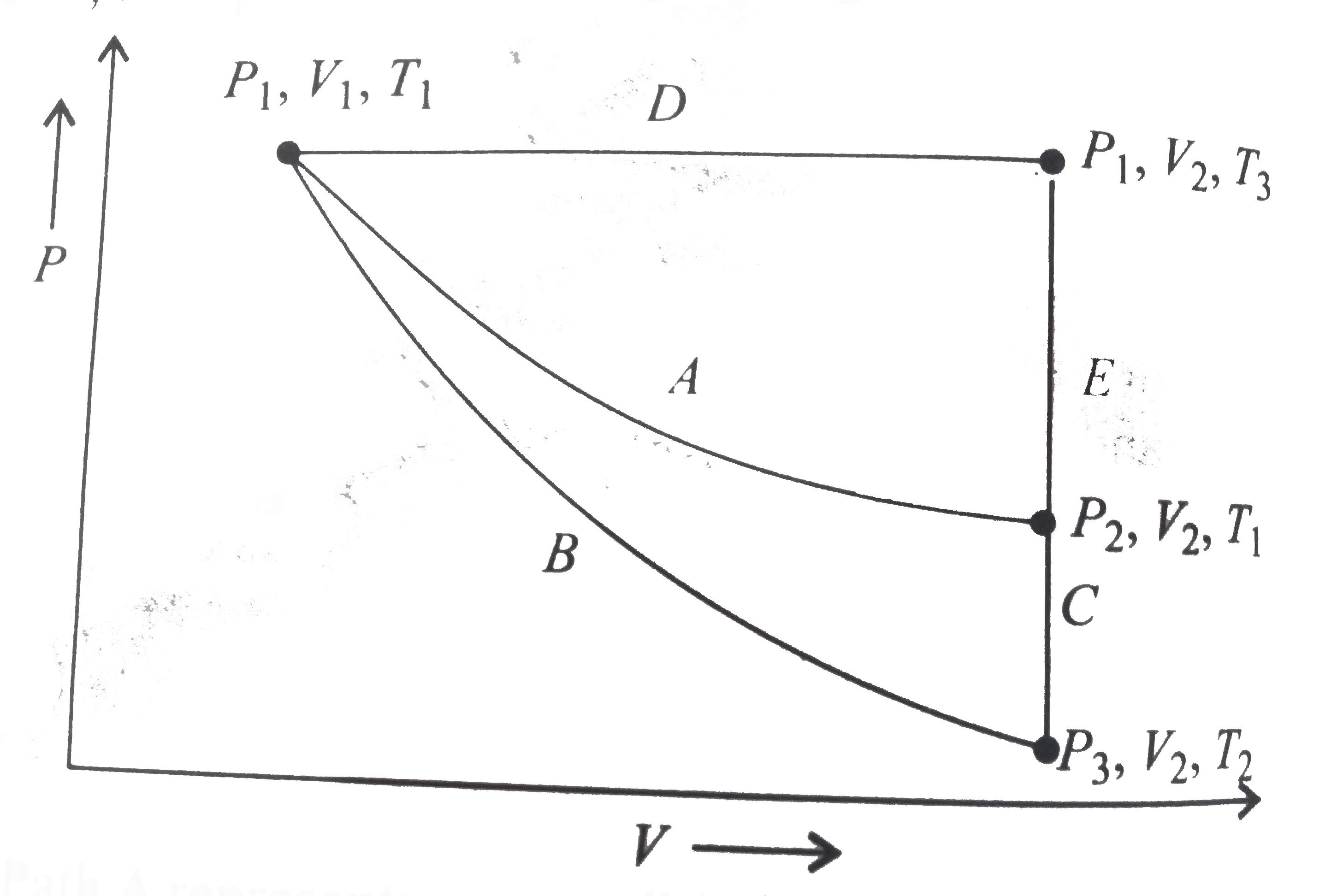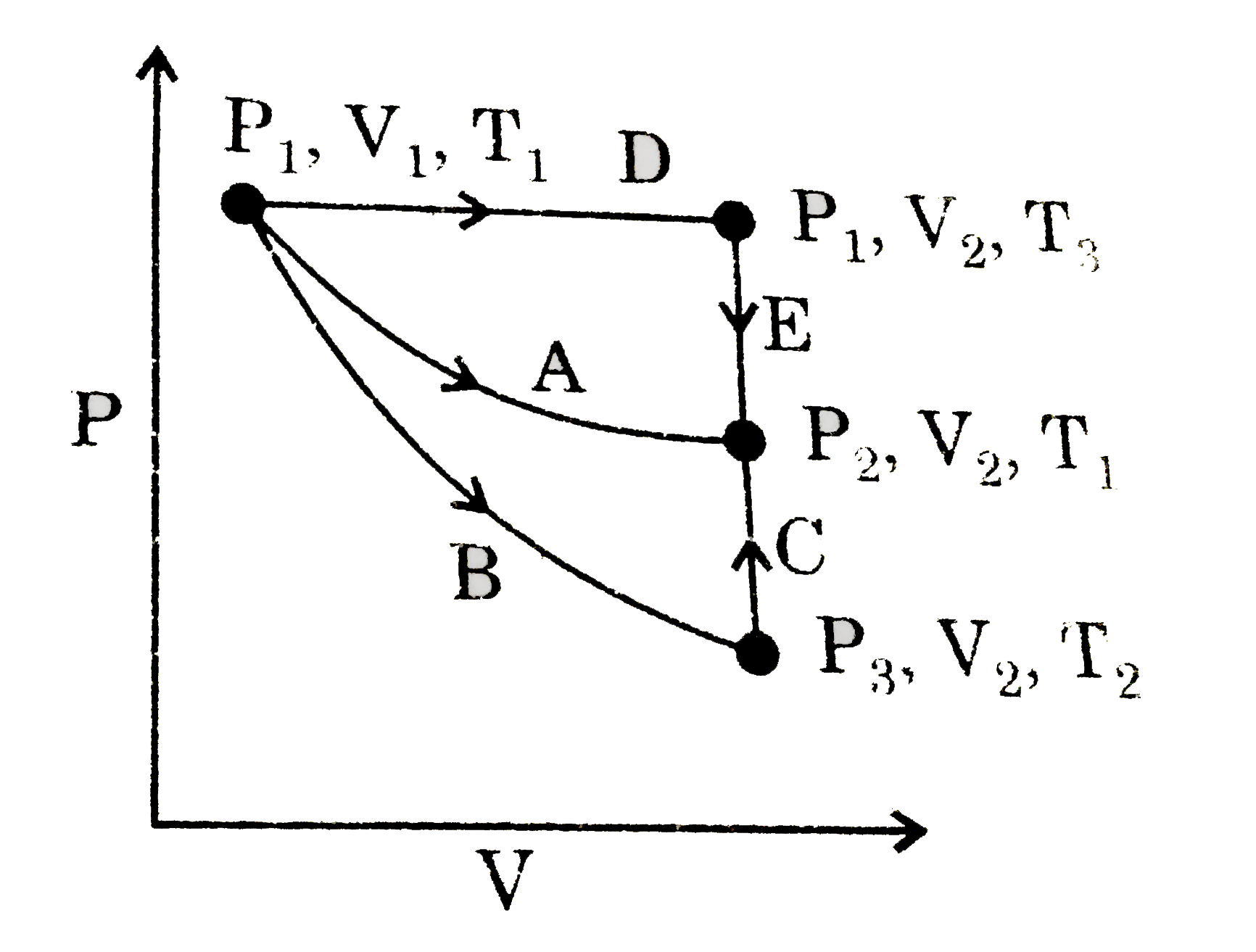The initial pressure, temperature & volume of 1 mol of a gas are P1,T1andV1 respectively. The state of the gas is changed by the following two ways. Will the internal energy change be the same in both cases?
(1) P1V1T2Reversible−−−−−→ProcessP2V2T2
(2) P1V1T1Irreversible−−−−−−→processP2V2T2.Solution in Bengali
The internal energy of a system is a state function. The change in internal energy in a process depends only on the initial and final states of the system. It does ot depend on the path used to arrive at the state. Since the initial and final state are the same in (1) and (2), the internal energy change will also be the same.
Topper's Solved these Questions
- CHEMICAL THERMODYNAMICSBOOK - CHHAYA PUBLICATIONCHAPTER - CHEMICAL THERMODYNAMICSEXERCISE - SOLVED WBCHSE SCANNER
46 Videos
- CHEMICAL THERMODYNAMICSBOOK - CHHAYA PUBLICATIONCHAPTER - CHEMICAL THERMODYNAMICSEXERCISE - SOLVED NCERT EXERCISE
22 Videos
- CHEMICAL THERMODYNAMICSBOOK - CHHAYA PUBLICATIONCHAPTER - CHEMICAL THERMODYNAMICSEXERCISE - QUESTION ANSWER ZONE FOR BOARD EXAMINATION (VERY SHORT ANSWER TYPE)
26 Videos
- CHEMICAL KINETICSBOOK - CHHAYA PUBLICATIONCHAPTER - CHEMICAL KINETICSEXERCISE - EXERCISE (NUMERICAL PROBLEMS)
37 Videos
- CHEMISTRY IN EVERYDAY LIFE BOOK - CHHAYA PUBLICATIONCHAPTER - CHEMISTRY IN EVERYDAY LIFE EXERCISE - PRACTICE SET 15
15 Videos
Similar Questions
For the process H2O(l)⇔H2O(g),ΔH=40.8kJ⋅mol−1 at the boiling poinit of water. Calculate molar entropy change for vaporisation from liquid phase.
View SolutionA thermodynamics state function is a quantity-
View SolutionClassify as open, closed or isolated system: (1) A cup of coffee placed on a table (2) Water in a beaker is boiled by heating (3) Lead nitrate is heated in a test tube (4) Solid NH4Cl is heated in a closed vessel (5) Substances present in a soda-water bottle (6) Mercury enclosed in the thermometer.
View Solution2A→4B+D , in this reaction, concentration of B increases to 2×10−3mol.L−1 after 10s from the start of the reaction . Calculate : rate of formation of B
View SolutionWhich will not enhance nutritional value of food-
View SolutionFor an ideal gas, an illustratio of three different paths A(B+C) and (D+E) from an initial state P1,V1,T1 to a final state P2,V2,T1 is shown in the given figure.

Path Arepresents a reversible isothermal expansion form P1,V1 to P2,V2, Path (B+C) represents a reversible adiabatic expansion (B) from P1,V1,T1→P3,V2,T2 followed by reversible heating the gas at constant volume (C)from P3,V2,T2 to P2,V2,T1. Path (D+E) represents a reversible expansion at constant pressure P1(D) from P1,V1,T1 to P1,V2,T3 followed by a reversible cooling at constant volume V2(E) from P1,V2,T3→P2,V2,T1.
What is qrev, for path (A)?
View SolutionFor an ideal gas, an illustratio of three different paths A(B+C) and (D+E) from an initial state P1,V1,T1 to a final state P2,V2,T1 is shown in the given figure.

Path Arepresents a reversible isothermal expansion form P1,V1 to P2,V2, Path (B+C) represents a reversible adiabatic expansion (B) from P1,V1,T1→P3,V2,T2 followed by reversible heating the gas at constant volume (C)from P3,V2,T2 to P2,V2,T1. Path (D+E) represents a reversible expansion at constant pressure P1(D) from P1,V1,T1 to P1,V2,T3 followed by a reversible cooling at constant volume V2(E) from P1,V2,T3→P2,V2,T1.
What is ΔS for path A?
View SolutionFor an ideal gas, an illustratio of three different paths A(B+C) and (D+E) from an initial state P1,V1,T1 to a final state P2,V2,T1 is shown in the given figure.

Path Arepresents a reversible isothermal expansion form P1,V1 to P2,V2, Path (B+C) represents a reversible adiabatic expansion (B) from P1,V1,T1→P3,V2,T2 followed by reversible heating the gas at constant volume (C)from P3,V2,T2 to P2,V2,T1. Path (D+E) represents a reversible expansion at constant pressure P1(D) from P1,V1,T1 to P1,V2,T3 followed by a reversible cooling at constant volume V2(E) from P1,V2,T3→P2,V2,T1.
What is qrev, for path (D+E)?
View SolutionIn an adiabatic process, the state of a gas is changed from P_(1),V_(1),T_(1), "to" P_(2),V_(2),T_(2). Which of the following relation is correct
View SolutionAn ideal gasa undergoes through folowing cyclic procees. 1-2 : Reversible adialbatic comparession from P_(1)V_(1)T_(1)"to"P_(2)V_(2)T_(2) 2-3 : Reversible isochoric heating from P_(2)V_(2)T_(2)" to " P_(3)V_(3)T_(3) 3-4 Reversible adialbatic expansion from P_(3)V_(3)T_(3)" to " P_(4)V_(4)T_(4) 4-1 Reversible isochoric cooling from P_(4)V_(4)T_(4)" to " P_(1)V_(1)T_(1) Eefficiencyof the cycle is :
View SolutionFor an ideal monoatomic gas, an illustration of three different paths A,(B+C) and (D+E) from an initial state P1,V1,T1 to a final state P2,V2,T1 is shown in the given figure .

Path A represents a reversible isothermal from P1V1 to P2,V2, path (B+C) represent a reversible adiabatic expansion (B) from P1,V1,T1 to P3,V2,T2 followed by reversible heating of the gas at constant volume (C) from P3,V2,T2 to P2,V2,T1. Path (D+E) represents a reversible expansion at constant pressure P1(D) from P1,V1,T1 to P1,V2,T3 followed by a reversible cooling at constant volume V2(E) form P1,V2,T3 to P2,V2,T1
What is ΔS for (D+E)?
View SolutionIn an adiabatic process the state of a gas is changed from P_(1) , V_(1) ,T_(1) , to P_(2) ,V_(2) ,T_(2). Which of the following relation is correct ?
View Solutionयदि रुद्धोष्म परिवर्तन में गैस की अवस्था P1,V1,T1 सेP2,V2,T2 तक परिवर्तित हो जाती है , तो निम्न में से कौन - सा संबंधसत्य है -
View SolutionEstablish gas equation, (P_(1)V_(1))/(T_(1))=(P_(2)V_(2))/(T_(2)) .
View SolutionA system Xundergoes following changes
XP1V1T1→WP2V2T1→ZP3V2T2→XP1V1T1
The overall process may be called as
View Solution
